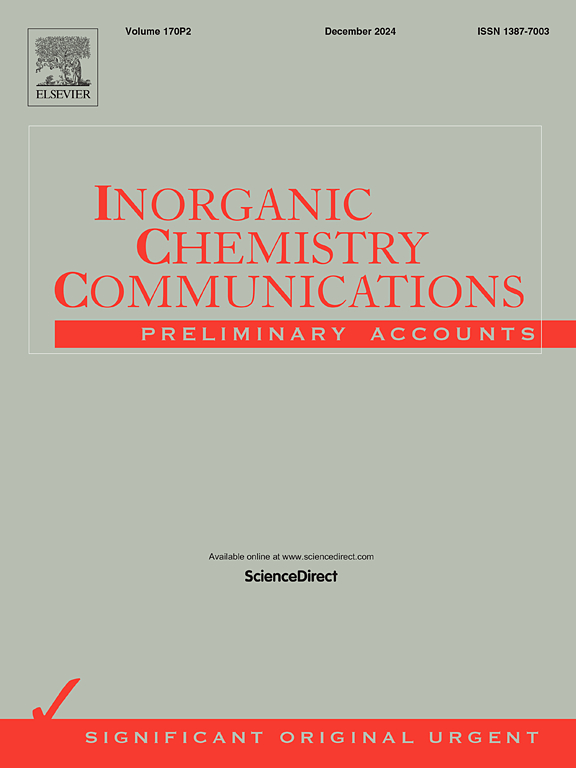Lanthanide(III)-based complexes for potential dual 1H/19F MRI contrast agents: Synthesis, structure, relaxivity and 19F NMR spectroscopy studies
IF 4.4
3区 化学
Q1 CHEMISTRY, INORGANIC & NUCLEAR
引用次数: 0
Abstract
Magnetic resonance imaging (MRI) is an effective technique for diagnosing diseases. Its most used modality is based on the T1-weighted contrast but is limited by the background signal of water in the tissue. A combination of different MR imaging modalities together can reduce this consideration and exclude background interference. Paramagnetic lanthanide cations have versatile magnetic and optical characteristics along with similar reactivities; hence, their complexes are good candidates as multimodal agents. Also, fluorinated probes are gaining increasing attention for the use due to the advantageous features of 19F MRI. Herein, the prototypes of LnDO3A-based fluorine-containing complexes were developed, providing potential detection by T1-weighted (Gd3+ complex) and 19F-based (Y3+, Eu3+ and Yb3+ complexes) MRI, or by means of optical imaging using lanthanide-based luminescence in the visible range (Tb3+ complex). The use of different Ln3+ ions causes only minor changes in the structure of complexes, while these probes are predicted to possess comparable structural stability while performing experiments with different imaging modalities.

镧系(III)基的潜在双1H/19F MRI造影剂配合物:合成、结构、弛豫度和19F NMR波谱研究
磁共振成像(MRI)是一种有效的疾病诊断技术。其最常用的方式是基于t1加权对比度,但受到组织中水的背景信号的限制。不同磁共振成像模式的组合可以减少这种考虑,并排除背景干扰。顺磁性镧系离子具有多种磁性和光学特性以及相似的反应性;因此,它们的复合物是多模态药物的良好候选者。此外,由于19F MRI的优点,氟化探针的使用越来越受到关注。本文开发了基于lndo3的含氟配合物的原型,提供了通过t1加权(Gd3+配合物)和19f基(Y3+, Eu3+和Yb3+配合物)MRI或通过可见光范围内基于镧系发光的光学成像(Tb3+配合物)的潜在检测。使用不同的Ln3+离子只会引起配合物结构的微小变化,而这些探针在进行不同成像方式的实验时预计具有相当的结构稳定性。
本文章由计算机程序翻译,如有差异,请以英文原文为准。
求助全文
约1分钟内获得全文
求助全文
来源期刊

Inorganic Chemistry Communications
化学-无机化学与核化学
CiteScore
5.50
自引率
7.90%
发文量
1013
审稿时长
53 days
期刊介绍:
Launched in January 1998, Inorganic Chemistry Communications is an international journal dedicated to the rapid publication of short communications in the major areas of inorganic, organometallic and supramolecular chemistry. Topics include synthetic and reaction chemistry, kinetics and mechanisms of reactions, bioinorganic chemistry, photochemistry and the use of metal and organometallic compounds in stoichiometric and catalytic synthesis or organic compounds.
 求助内容:
求助内容: 应助结果提醒方式:
应助结果提醒方式:


